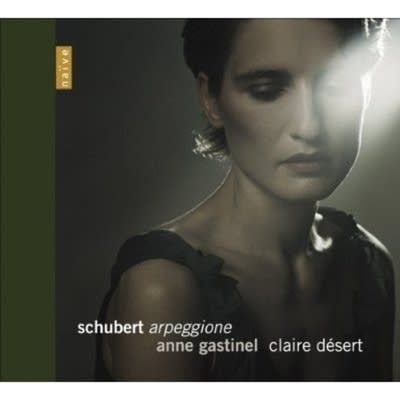New Classical Tracks: Consumed by the cello
Go Deeper.
Create an account or log in to save stories.
Like this?
Thanks for liking this story! We have added it to a list of your favorite stories.

Anne Gastinel has been consumed by the cello since she was 4 years old. Gastinel was born into a family of French musicians. She and four siblings are professional musicians.
"Maybe I fell in the pot when I was small," she said.
At first she played the cello to imitate her sister. Soon the instrument completely seduced her. By the time she was 18 years old, Gastinel had earned numerous awards, and performed in more than 50 cities throughout Europe.
The transition from child prodigy to adult performer wasn't easy. Being a performer, she explains, is a beautiful life, but to have beauty you have to suffer a little.
Turn Up Your Support
MPR News helps you turn down the noise and build shared understanding. Turn up your support for this public resource and keep trusted journalism accessible to all.
Gastinel's new disc is devoted to Franz Schubert, and he could certainly identify with that artistic creed. When Schubert was just 19 years old, he was employed as an elementary teacher in his father's school. This was pure suffering for Schubert, who wanted to be a full-time composer.
During his first year as a teacher, however, he did manage to produce two symphonies, a mass, a large-scale cantata, more than 100 songs, and three violin sonatas. Ten years later, these sonatas were published as sonatinas.
The Sonatina in D major is the shortest of the three. It appears on this new recording in a transcription for cello and piano. Anne Gastinel is a very serious cellist who rarely smiles when she performs, yet she has no trouble capturing the sunny spirit of this sonatina.
In 1824, Schubert wrote a sonata for the arpeggione, a newly invented instrument -- a kind of guitar played with a bow. The instrument never caught on. In fact, Schubert's sonata was published with alternate parts for violin or cello.
Anne Gastinel's style really makes this music shine. In the first movement of the Arpeggione Sonata she caresses each note to develop a graceful singing phrase. Gastinel uses very little vibrato and precise intonation, completely exposing her oaky sound,
She and pianist Claire Desert are expertly matched on this sonata, sensing each other's intentions. The adagio's achingly beautiful melody is played so tenderly you'll want to listen to it again and again.
Eight of the 14 tracks on this recording are transcriptions of songs. After contracting syphilis in 1822, Schubert was painfully aware of his own mortality. He often expressed his profound sadness through dramatic key changes between major to minor modes.
In the song titled "To be Sung by the Water," we hear this change briefly at the end of each verse. The heartfelt performance of this transcription for cello and piano packs an emotional punch.
One of Schubert's most memorable melodies was "The Trout," later used in his "Trout" Quintet. On this new release, Gastinel and Desert share an alluring transcription of that folk-like melody which is playful and carefree.
Schubert wrote two song collections during the last summer of his life. They were published together after his death as "Schwanengesang."
The most famous piece from Schubert's "swan song" is "Standchen," which is often heard as an instrumental piece. In this setting, Gastinel plays the wistful melody of this serenade with warmth and intensity.
Anne Gastinel's goal is not to please the listener. Her goal is to be true to the music, and to immerse herself in it.
On this new collection of Schubert transcriptions, Gastinel and her chamber partner Claire Desert go deep inside the music, offering a genuine interpretation of the composer's intentions. As music lovers, what more could we want?




